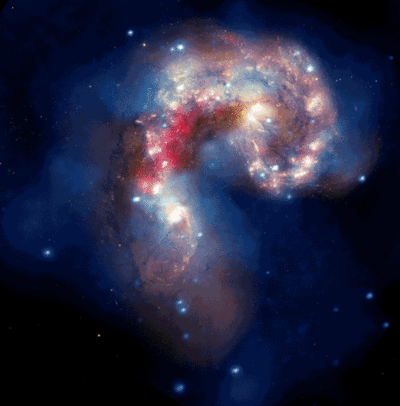73 posts
Latest Posts by spinatlasagne-blog - Page 3





David Attenborough’s Final Statement for Mankind in The Life of Mammals


When a drop of water falls onto the surface of a larger body of water, the drop doesn't fall right in. Instead it merges in a series of steps, often launching a series daughter droplets upward.

Above the Clouds - Yangshou
Cool Space GIFs from the Internet
There’s a lot of historical and archived space footage on the internet and we’re excited to see that the public (you!) have taken it to create many other products that teach people about exploration, space and our universe. Among those products are GIFs. Those quick videos that help you express what you’re trying to say via text, or make you laugh while surfing the web.
Are space GIFs the new cat videos of the internet? Don’t know, but we sure do like them!
Here are a few neat space GIFs from the internet…
This GIF of the Cat Eye Nebula shows it in various wavelengths…

Followed by a GIF of a cat in space…floating in front of the Antennae galaxies…

One time, a frog actually photobombed the launch of our LADEE spacecraft…someone on the internet gave him a parachute…

Want to see what it’s like to play soccer in space? There’s a GIF for that…

There are also some beautiful GIFs looking through the Cupola window on the International Space Station…


This warped footage from the International Space Station gives us ride around the Earth…

While this one encourages us to explore the unknown…

When our New Horizons spacecraft flew by dwarf planet Pluto in 2015, the internet couldn’t get enough of the Pluto GIFs…


NASA GIFs

Want to dive into a black hole of other fun space GIFs? Check out our GIPHY page HERE.
Want to use our GIFs?! You can! Our GIFs are accessible directly from the Twitter app. Just tap or click the GIF button in the Twitter tool bar, search for NASAGIF, and all NASA GIFs will appear for sharing and tweeting. Enjoy!
GIF Sources
Cat Eye GIF: https://giphy.com/gifs/astronomy-cZpDWjSlKjWPm Cat GIF: https://giphy.com/gifs/cat-HopYL0SamcCli Frog GIF: https://giphy.com/gifs/nasa-photo-rocket-NOsCSDT2rUgfK Soccer GIF: https://giphy.com/gifs/yahoo-astronauts-zerogravity-QF1ZomA11zofC Cupola 1 GIF: https://giphy.com/gifs/nasa-Mcoxp6TgvQm6A Cupola 2 GIF: https://giphy.com/gifs/timelapse-space-11f3o8D2rQWzCM Earth GIF: http://giphy.com/gifs/earth-milky-way-international-space-station-ONC6WgECm5KEw Explore GIF: https://giphy.com/gifs/text-timelapse-lapse-Vj7gwAvhgsDYs Pluto 1 GIF: https://giphy.com/gifs/l46CzjUnYFfeMXiNO Pluto 2 GIF: https://giphy.com/gifs/pluto-dbV1LkFWWob84
Make sure to follow us on Tumblr for your regular dose of space: http://nasa.tumblr.com
Eight Small Satellites Will Give Us a New Look Inside Hurricanes

The same GPS technology that helps people get where they’re going in a car will soon be used in space in an effort to improve hurricane forecasting. The technology is a key capability in a NASA mission called the Cyclone Global Navigation Satellite System (CYGNSS).

The CYGNSS mission, led by the University of Michigan, will use eight micro-satellite observatories to measure wind speeds over Earth’s oceans, increasing the ability of scientists to understand and predict hurricanes. Each microsatellite observatory will make observations based on the signals from four GPS satellites.

The CYGNSS microsatellite observatories will only receive signals broadcast directly to them from GPS satellites already orbiting the Earth and the reflection of the same satellite’s signal reflected from the Earth’s surface. The CYGNSS satellites themselves will not broadcast.

The use of eight microsatellite observatories will decrease the revisit time as compared with current individual weather satellites. The spacecraft will be deployed separately around the planet, with successive satellites passing over the same region every 12 minutes.
This will be the first time that satellites can peer through heavy tropical rainfall into the middle of hurricanes and predict how intense they are before and during landfall.

As the CYGNSS and GPS constellations orbit around the Earth, the interaction of the two systems will result in a new image of wind speed over the entire tropics every few hours, compared to every few days for a single satellite.

Another advantage of CYGNSS is that its orbit is designed to measure only in the tropics…where hurricanes develop and are most often located. The focus on tropical activity means that the instruments will be able to gather much more useful data on weather systems exclusively found in the tropics. This data will ultimately be used to help forecasters and emergency managers make lifesaving decisions.
Launch!

CYGNSS launched at 8:37 a.m. EST on Thursday, Dec. 15, from our Kennedy Space Center in Florida. CYGNSS launched aboard an Orbital ATK Pegasus XL rocket, deployed from Orbital’s “Stargazer” L-1011 carrier aircraft.
Pegasus is a winged, three-stage solid propellant rocket that can launch a satellite into low Earth orbit. How does it work? Great question!

After takeoff, the aircraft (which looks like a commercial airplane..but with some special quirks) flies to about 39,000 feet over the ocean and releases the rocket.

After a five-second free fall in a horizontal position, the Pegasus first stage ignites. The aerodynamic lift, generated by the rocket’s triangle-shaped wing, delivers the payload into orbit in about 10 minutes.
Pegasus is used to deploy small satellites weighing up to 1,000 pounds into low Earth orbit.
And success! The eight CYGNSS satellites were successfully deployed into orbit!
Make sure to follow us on Tumblr for your regular dose of space: http://nasa.tumblr.com

Heaven on Earth
https://player.vimeo.com/video/108650530?title=0&byline=0&portrait=0
Wanderers - a short film by Erik Wernquist
http://www.erikwernquist.com/wanderers/



